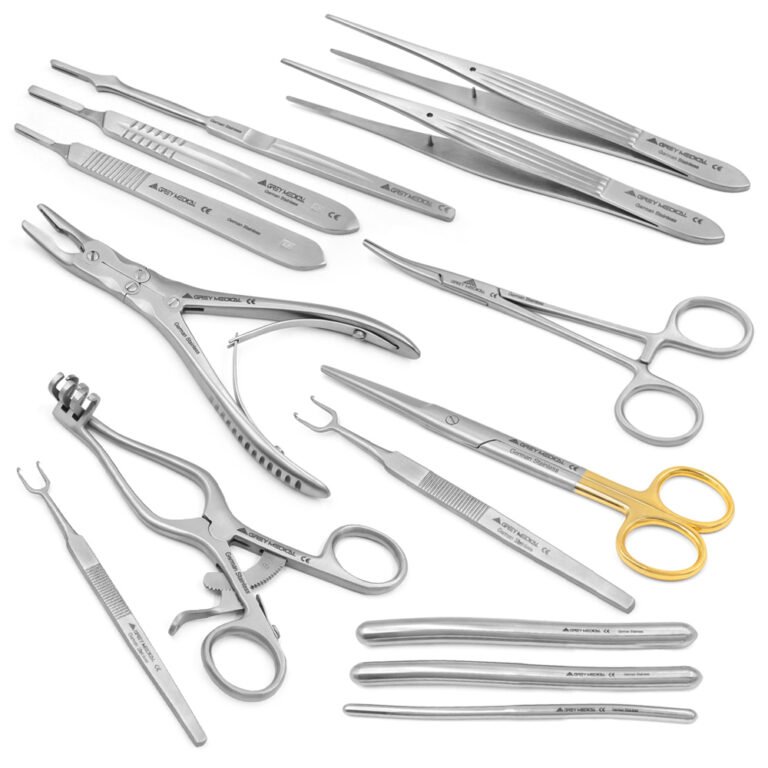The success of any surgical procedure lies significantly in the precision, quality, and availability of operation theatre instruments. These tools are indispensable in ensuring that surgeons and medical professionals can perform procedures with accuracy, safety, and efficiency. From scalpels to advanced laparoscopic devices, each operation theatre instruments has a vital role to play.
What Are Operation Theatre Instruments?
Operation theatre instruments, often referred to as surgical instruments, are specially designed tools used by medical professionals during surgical procedures to assist in performing precise and controlled actions. These tools vary in design, size, and use, depending on the specific requirements of a surgery. They are an integral part of the surgical environment, and their functionality spans cutting, dissecting, gripping, clamping, and suturing.
The development of surgical instruments has evolved significantly over time, with advancements in medical technology leading to the creation of more specialised, efficient, and ergonomic tools. While some have remained relatively unchanged for centuries, others reflect the cutting-edge innovations of modern medical science.
Types of Operation Theatre Instruments
Operation theatre instruments can be broadly categorised based on their function and use. This classification helps streamline their application during surgeries and ensures each tool serves its purpose effectively.
Cutting and Dissecting Instruments
Cutting tools, such as scalpels, scissors, and surgical saws, are designed to incise or excise tissue with precision. Scalpels, in particular, are a staple in any operation theatre and come in various blade shapes suited to different surgical needs. Surgical scissors, on the other hand, are used for cutting tissues, sutures, or drapes and can be either curved or straight.
Grasping and Holding Instruments
Tools like forceps and clamps are used to hold or manipulate tissues without causing damage. Forceps, often referred to as “surgical tweezers,” are particularly useful for grasping small objects, while clamps are indispensable in controlling blood flow during operations.
Haemostatic Instruments
Haemostatic instruments like artery forceps are critical in controlling bleeding. By clamping blood vessels securely, these tools allow surgeons to maintain a clear view of the procedure area, reducing complications and improving outcomes.
Retracting Instruments
Retractors are employed to hold back tissues or organs, keeping the surgical site exposed and accessible. These instruments come in various designs, ranging from handheld to self-retaining types equipped with locking mechanisms for ease of use during lengthy procedures.
Suturing Instruments
Needle holders and sutures are instrumental in wound closure. Needle holders offer stability and control while placing sutures, ensuring precision and security during the suturing process.
Advanced Instruments for Minimally Invasive Surgeries
With the rise of minimally invasive techniques, instruments like laparoscopes and endoscopes are now commonly used in operation theatres. These tools provide a magnified view of internal structures through small incisions, enhancing surgical precision while minimising patient trauma and recovery time.
The Importance of Sterility and Maintenance
Operation theatre instruments not only need to provide precision but must also adhere to stringent sterility standards. Contaminated surgical tools can pose serious risks to patients, including infections and complications. This is why sterilisation processes such as autoclaving, chemical sterilisation, or ultraviolet light sterilisation are used to ensure that all instruments are germ-free before use.
Additionally, regular maintenance of these instruments is crucial for their longevity and effectiveness. Surgical tools are often subjected to repetitive use and wear, which can lead to dull blades, loosening screws, or malfunctioning parts. Routine inspections and servicing are necessary to maintain their reliability.
Why Operation Theatre Instruments Are Vital to Surgical Success
Surgical instruments are more than just tools; they are a lifeline during medical procedures. Their design and functionality directly impact the outcome of surgeries, both simple and complex. Without the right instruments, surgeons face significant challenges in delivering effective treatment. Proper instrumentation ensures not only the success of procedures but also the safety and comfort of patients.
Furthermore, as medical science progresses, the field of surgical tools continues to develop. Innovations like robotic surgery and 3D imaging technology further enhance the performance of operation theatre instruments, offering new possibilities for precision and minimally invasive practices.
Conclusion
Operation theatre instruments form the backbone of medical surgeries, playing a vital role in the delivery of quality healthcare. Whether it’s a traditional scalpel or a state-of-the-art laparoscope, each instrument is tailored to meet the intricate demands of surgical procedures. Their precision, functionality, and reliability are crucial in achieving successful outcomes and ensuring patient safety.
Through proper maintenance, sterilisation, and innovation, these tools continue to evolve alongside advances in medicine, empowering surgeons to perform with unparalleled accuracy. The importance of operation theatre instruments cannot be overstated—they are the silent heroes of every surgery, transforming medical expertise into life-saving actions.





Comments